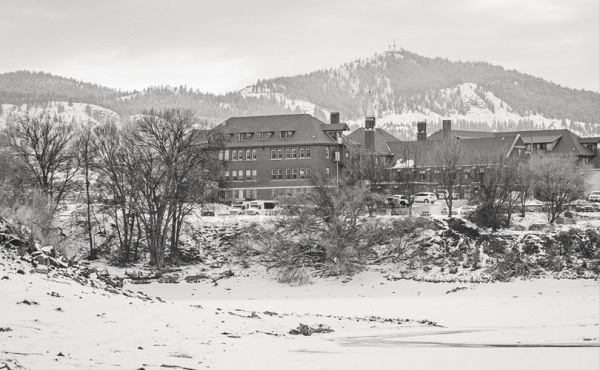Alberta
Watch: Ten new cases of COVID-19 in Alberta. Two people in intensive care

From the Province of Alberta
COVID-19 in Alberta March 14
Ten additional cases of COVID-19 have been confirmed, bringing the total number of cases in the province to 39.
Six of the new cases are in Calgary Zone and four are in Edmonton Zone.
Two of the new cases, one in Edmonton Zone and the other in Calgary Zone, have been admitted into intensive care. All other new cases are self-isolating at home and expected to make a full recovery.
Eight of the new cases have been confirmed to be related to international travel or to a previously confirmed case. Investigations are ongoing on the remaining two cases.
“Given the rise of the COVID-19 pandemic, we know parents, students, and school officials are very concerned. I want to assure all Albertans that their children’s safety is top of mind in all our decisions, and we are making the best public health decisions we can with the information we have, in this rapidly developing situation. We are prepared to make changes if and when the situation warrants it.”
School update
A conference call was held today with the chief medical officer of health and more than 500 representatives from Alberta’s school boards, school authorities, and education stakeholders.
On March 13, Alberta recommended that schools remain open at this time. The World Health Organization does not recommend school closures as the only way to prevent the spread of COVID-19 in children.
Alberta continues to monitor the province’s situation carefully. If the situation warrants it, the Alberta government could direct the closure of an individual school, a group of schools, an entire school division, or all schools in the province. This would be a decision of Cabinet’s emergency management committee.
In meantime, all schools should take steps to protect the health of students and staff:
- eliminate large gatherings of students
- ensure no more than 250 people are in the same room at any given time
- consider cancelling extracurricular activities that involve physical contact
A new guide has been developed to help schools and daycares reduce the risk of spreading COVID-19. The guide is available at alberta.ca/COVID19.
We will continue to update this document based on feedback received from education stakeholders.
Flight Information
There are more and more flights with passengers confirmed to have the virus. Albertans should self-monitor their air travel, so that public health officials can use their time to trace other contacts. Those who have recently returned to Alberta via a flight, are encouraged to visit alberta.ca/COVID19 for flight information and to self-isolate if found to be at risk of exposure.
Government will be posting flight information that includes the flight number, date and any seats on the flight that might be at risk of exposure to COVID-19. Passengers in affected seats are encouraged to self-isolate for 14 days after arrival in Canada and monitor for symptoms. Other passengers are not required to self-isolate but should monitor for symptoms as a precaution.
Certain professions may be exempt from travel restrictions. Any exemptions are being determined on a case-by-case basis after consultation with industry stakeholders. At this time, flight attendants and pilots are exempted from travel recommendations, provided they practice good hygiene and take precautions to limit their risk.
Updated resources
- Flight information is posted under the “Info for Albertans” section.
- The new guide for schools and child care programs has been posted under “Info for schools and child care centres.”
- A new information sheet on mass gatherings, including risk mitigation strategies, has been posted under “Public health restrictions on mass gatherings.”
- Information posters are available under “Resources” for organizations and businesses to distribute.
- Alberta Health Services has launched an online self-assessment tool to help Albertans determine whether they should get tested for COVID-19. Over 100,000 Albertans completed self-assessments within the first 24 hours.
Quick facts
- Alberta’s Provincial Operations Centre in Edmonton elevated from a level 2 to a level 3 – out of a possible 4. Level 3 indicates an increased amount of cross-government coordination through the Alberta Emergency Management Agency.
- The most important measures that Albertans can take to prevent respiratory illnesses, including COVID-19, is to practise good hygiene.
- This includes cleaning your hands regularly for at least 20 seconds, avoiding touching your face, coughing or sneezing into your elbow or sleeve, disposing of tissues appropriately, and staying home and away from others if you are sick.
- Anyone who has health concerns or is experiencing symptoms of COVID-19 should contact Health Link 811 to see if follow up testing is required.
- For recommendations on protecting yourself and your community, visit alberta.ca/COVID19.
Alberta
Tell the Province what you think about 120 km/h speed limit on divided highways

Alberta’s government is engaging with Albertans on increasing speed limits on rural highways.
Starting Nov. 7, Albertans can share their views on modernizing speed limits on divided highways through an online survey running until Dec. 12. The survey will ask how Albertans view raising the speed limit by 10 km/h on various highways from 110 km/h to 120 km/h.
“Alberta’s government is investigating how to safely increase speed limits on divided highways, and if Albertans support increasing speed limits. We are investing more than $1.5 billion this year alone to improve highway safety and upgrade infrastructure across the province. We want Albertans to be able to drive the speed limit that the highways are designed for. Modern vehicles combined with public awareness mean we can explore higher speed limits.”
The survey will provide Albertans with the opportunity to provide input on which highways they would prioritize having a speed limit increase, their views on restricting commercial trucks from using the far-left lane on highways with three or more lanes and any other feedback that would improve driving experiences on provincial highways.
Following a review of the survey results, Alberta’s government plans to conduct a mini-trial of a 120 km/h speed limit to assess the impacts of higher speed limits on divided highways. The trial will include strong monitoring to assess driving behaviour.
Alberta’s government reminds motorists to slow down and drive to the conditions. Speed limits are set for ideal conditions. When roads are wet, icy or when there is reduced visibility, motorists should slow down.
Quick facts
- Alberta’s provincial highway network includes more than 64,000 lane kilometres of highways, about 11,700 lane kilometres of which are divided.
- The posted speed limits of Alberta’s divided highways range from 100 to 110 km/h, although the posted speed limits on segments passing through cities, towns and First Nation lands can be as low as 50 km/h due to factors such as signalized intersections, pedestrians and local access.
Related information
- The survey is available online.
Alberta
Alberta Announces Members of Class Size and Complexity Committee

A new Class Size and Complexity Cabinet Committee has been struck to address classroom challenges.
Taking action on class size and complexity
Classrooms in Alberta continue to grow and are becoming increasingly complex, and immediate action is needed to address these issues in the public education system. To meet these issues head on, the Class Size and Complexity Cabinet Committee has been created. The cabinet committee will help guide government policy and deploy resources to deal with class sizes and classroom complexity.
“We are committed to providing world-class education, and we’re building schools and funding education at a rate unprecedented in this province. This committee will help us address the concerns of teachers, parents and students around class sizes and complexity.”
Throughout November, Alberta’s government will continue work with school boards to collect data on class sizes and classroom composition. The cabinet committee will use this data to direct resources to the classrooms that need it the most. Starting in January, this data will be made available and released annually.
The Class Size and Complexity Cabinet Committee will be co-chaired by the Premier of Alberta and the Minister of Education and Childcare. It will also include non-voting members representing school boards, administrators and a teacher representative of the ATA. The committee will also hear from school boards, academic experts, teachers, educational assistants, complex needs specialists and parents to inform its decisions and guide this vital work.
“We heard teacher concerns, and we are providing solutions. The Class Size and Complexity Cabinet Committee will help us take immediate action and ensure teachers and students are given the support they need to succeed.”
In June 2025, Alberta’s government established the Aggression and Complexity in Schools Action Team to provide advice on addressing classroom complexity. The report has been received and will be released soon. Over the coming months, the cabinet committee will start rolling out solutions informed by the action team’s recommendations. In addition, the committee will guide the creation of a new inclusive education policy framework.
“The work of this committee will support teachers in responding to the growing complexity in our classrooms. We will ensure that the voices of the contributors to the initial work guide
solutions that truly improve the educational experience for students and the educators who serve them.”
“I appreciate the government’s recognition of the impact of classroom complexity and their commitment to working collaboratively for improvement. Supporting teachers ultimately improves classroom conditions and student outcomes.”
Using data collected, this cabinet committee will also guide Alberta’s government in executing its commitment to hire 3,000 new teachers and 1,500 new educational assistants over the next three years. They will also assist in identifying and prioritizing where new schools and modulars should be built, advancing the government’s commitment to invest $8.6 billion to build 130 new schools, and provide 109 modular classrooms in the growing communities that need them urgently.
Quick facts
- Members of the Class Size and Complexity Cabinet Committee include:
- Danielle Smith, Premier of Alberta
- Demetrios Nicolaides, Minister of Education and Childcare
- Jason Nixon, Minister of Assisted Living and Social Services
- Rick Wilson, Minister of Mental Health and Addiction
- Searle Turton, Minister of Child and Family Services
- Lynnette Anderson, chief superintendent, Edmonton Catholic Schools
- Nicole Buchanan, chair, Red Deer Public Schools
- Marilyn Dennis, former president of Alberta School Boards Association
- Mike McMann, superintendent, Fort Vermilion Schools and President, College of Alberta School Superintendents
- Joanne Pitman, chief superintendent, Calgary Board of Education
- Dr. Elissa Corsi, Alberta Teachers’ Association
- Only Cabinet members are voting members. Additional guests will be invited to attend and share their expertise at the discretion of the chairs.
- School boards will be required to submit data on Alberta classrooms by Nov. 24.
-

 Business1 day ago
Business1 day agoOttawa should stop using misleading debt measure to justify deficits
-

 International1 day ago
International1 day agoLarge US naval presence in Caribbean reveals increased interest in western security
-

 Energy1 day ago
Energy1 day agoThawing the freeze on oil and gas development in Treaty 8 territory
-

 International1 day ago
International1 day agoBBC uses ‘neutrality’ excuse to rebuke newscaster who objected to gender ideology
-

 National2 days ago
National2 days agoNew Canadian bill would punish those who deny residential indigenous schools deaths claims
-

 Business1 day ago
Business1 day agoWhat Pelosi “earned” after 37 years in power will shock you
-

 Agriculture1 day ago
Agriculture1 day agoThe Canadian Food Inspection Agency’s Bloodlust: Worshipping Policies While Ignoring Science
-

 Agriculture7 hours ago
Agriculture7 hours agoWas The Ostrich “Cull” A Criminal Act?









